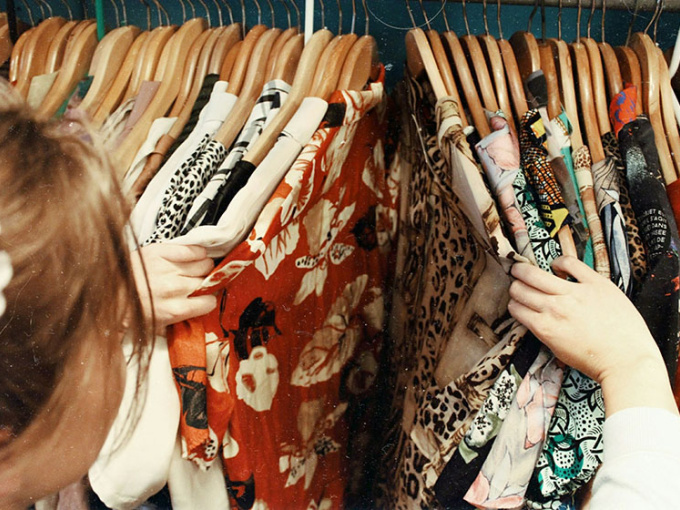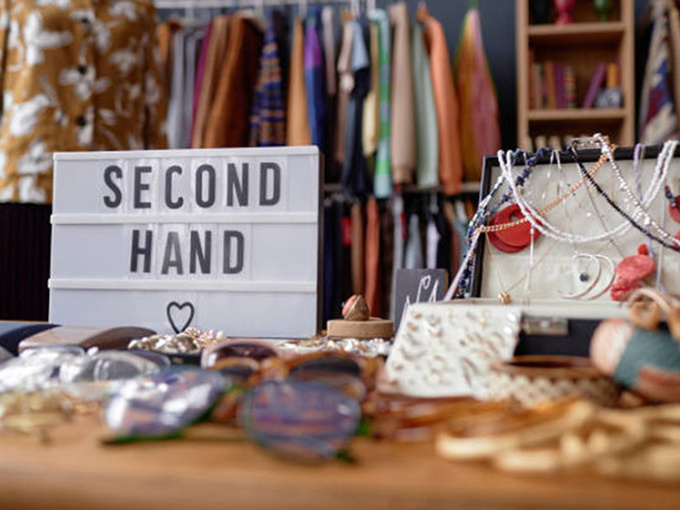
It’s that confusing Irish season, the space between spring and summer, where the morning sun dares you to wear sandals, only for the wind to slap your ankles with regret an hour later. Or where you choose the warmer clothes, just to find yourself baking in the midday sun.
During the change of seasons, I’m often found standing in front of the wardrobe thinking:
“Black tights and Doc Martens? Or summer dress and flip flops? Do I chance wearing the wedge platforms that will give me blisters if I have to run after my toddler (which I will)? Do I need to hide my millennial tendencies and try to appear cool to the hundreds of Gen Z’ers that I will encounter in lecture halls? Do I have a serious meeting with programme stakeholders, or will I mostly be replying to emails from my office where no one will see the frankly excellent new outfit I’ve been dying to unleash on the world?”
These are the wardrobe negotiations I conduct most mornings. And it was during one of these stand-offs that I realised: this isn’t just getting dressed. This is psychology in action. What struck me, mid outfit change number three, was how many layers are involved in getting dressed (pun intended). I’m never just choosing clothes. I’m negotiating identity, audience, sensory preferences, and ambition. Fashion isn’t frivolity. It’s self-expression, a social signal and at times even a survival and self-regulatory strategy.
Individuality in Fashion
While fashion is often framed through its social and cultural meanings, it also operates on an aesthetic and sensory level. Individuals develop preferences for certain visual aesthetics (e.g., bold patterns, monochrome palettes, layered textures), which can serve both expressive and regulatory functions. Li et al (2024) have defined this as your “fashion personality”, identifying four distinct personalities, “Rational, Casual, Refined, and Innovative”. These personalities and their linked preferences are not merely stylistic but may be shaped by psychological, and even developmental factors (Li et al, 2024; Greenberg et al, 2020).
For some, wearing bright colours or visually stimulating patterns can be energising, uplifting, or emotionally grounding (Zhang, 2013). Different clothes can impact how we act and how we perceive the world around us through enclothed cognition (Adam & McGalinsky, 2012). There is a need for much more research, but I maintain that for neurodivergent populations, this may also serve a self-regulatory purpose. Highly patterned and brightly coloured clothing may be calming or satisfying due to their visual tactility and predictable nature. This is not necessarily about standing out; rather, it’s about achieving a state of cognitive or emotional balance through aesthetic input.
Conversely, for others, fashion choices lean toward minimalism, neutral tones, and repetitive combinations of outfit, not out of apathy, but through conscious decision to build a capsule wardrobe. These preferences may reflect a desire for visual harmony, reduced decision-making load, or a low-sensory profile that allows individuals to move through the world with fewer distractions or disruptions (Bardey et al, 2022)
These aesthetic orientations function as a form of visual identity, a consistent palette or silhouette can become a non-verbal signature, enhancing one's sense of continuity and self-definition (Li et al, 2024). Whether vibrant or understated, these choices are deeply psychological. They allow individuals to calibrate how much of themselves they want to show, how they want to feel, and how they want to be seen.

Fast Fashion and Sustainability in Fashion
While fashion serves as a powerful means of self-expression, it also exists within an increasingly fraught ethical landscape. The rise of fast fashion has made clothing more accessible and trend-responsive than ever before, but at significant environmental and human costs (Espostia et al, 2024). For those who experience fashion as a form of identity construction, this creates a complex tension: how to maintain an evolving, expressive wardrobe without contributing to systems of overproduction, exploitation, and waste.
This is not a purely consumer dilemma: it is a psychological and moral negotiation. People experience dissonance between their environmental value system (e.g., sustainability, anti-exploitation) and their consumption behaviour toward non-sustainable brands and fast fashion (Zimand-Sheiner & Lissitsa, 2024). Attempts to resolve this dissonance have given rise to alternative approaches, such as slow fashion, thrifting, preloved sales, and clothing swaps, and intentional rewearing. Not just as environmental acts, but potentially as modes of ethical self-alignment.
The fashion choices people make are rarely shallow or unthinking. They are often the outcome of competing psychological needs: to express, to belong, to resist, to align with personal ethics, and to simply feel right in one’s body and context. Understanding these choices requires a psychological lens that honours both the individual and the systems they’re navigating.
Where Does This Leave Me?
So, there I was — one foot in a Doc Marten, one in a sandal, toddler tugging at my sleeve, wondering if my outfit would be seen by students, stakeholders, or no one at all. It turns out, that moment of indecision was a meaningful one. It was about navigating the many identities I hold, the roles I move between, and the inner conflict between wanting to express myself and wanting to do right by the planet.
Fashion isn’t simply a personal choice; it’s a psychological act. It reflects how we see ourselves, how we wish to be seen, and how we connect to or resist the groups around us. It speaks to our aesthetic preferences, our sensory needs, and our ethical values. And for all these reasons, it deserves to be taken seriously, not only by designers and marketers, but by psychologists, educators, and anyone interested in what it means to be human in a world where how we look still matters.
So tomorrow morning, when I inevitably change my outfit three times, I’ll remind myself: this is research. Or at least, it’s psychologically informed decision-making.
By Dr Aoife McLoughlin, MIC Department of Educational Psychology, Inclusive & Special Education.
References
Adam, H., & Galinsky, A. D. (2012). Enclothed cognition. Journal of Experimental Social Psychology, 48(4), 918–925.
Bardey, A., Booth, M., Heger, G., Larsson, J. (2022). Finding yourself in your wardrobe: An exploratory study of lived experiences with a capsule wardrobe. International Journal of Market Research, 64(1), 113–131.
Degli Esposti, P., Mortara, A., & Roberti, G. (2024). Unsustainable Fashion: SHEIN and the Fast Fashion Consumption Model. Italian Sociological Review, 14(3), 929–951.
Greenberg, D., Ehrensperger, E., Schulte-Mecklenbeck, M., Hoyer, W. D., Zhang, Z. J., & Krohmer, H. (2020). The role of brand prominence and extravagance of product design in luxury brand building: What drives consumers’ preferences for loud versus quiet luxury? Journal of Brand Management, 27, 195–210.
Li, Q., Zhao, J., Xue, Z., & Zeng, X. (2024). A systematic approach to learning and identifying personality tendencies of consumers for individualized fashion product development. Textile Research Journal, 94(15–16), 1652–1666.
Zhang, J. F. (2013). The Application of Color Psychological Effect on Fashion Design. Advanced Materials Research, 796, 474–478.
Zimand-Sheiner, D., & Lissitsa, S. (2024) Generation Z - factors predicting decline in purchase intentions after receiving negative environmental information: Fast fashion brand SHEIN as a case study, Journal of Retailing and Consumer Services, 81, Article 103999.



